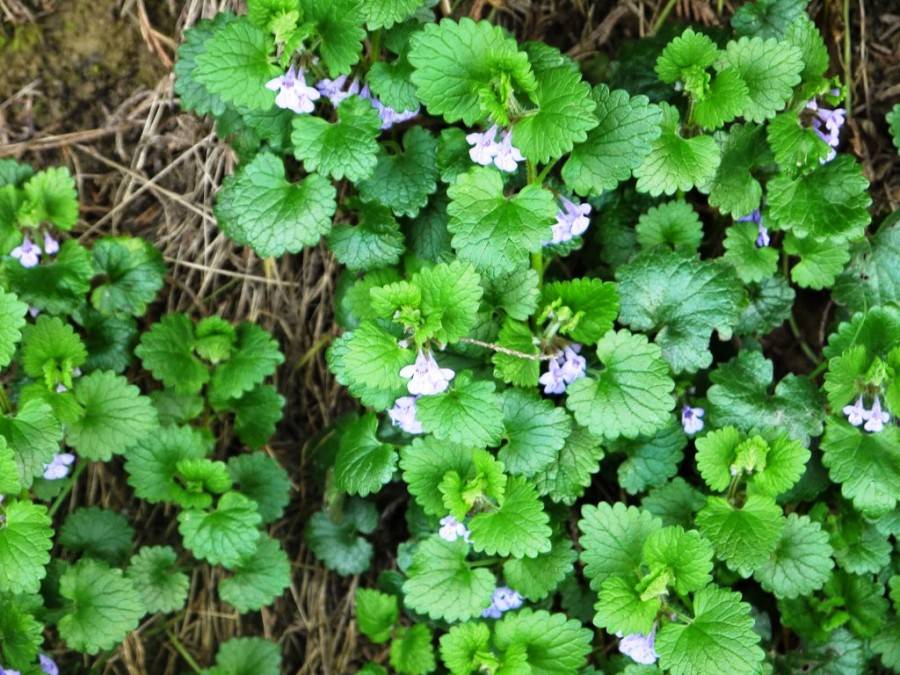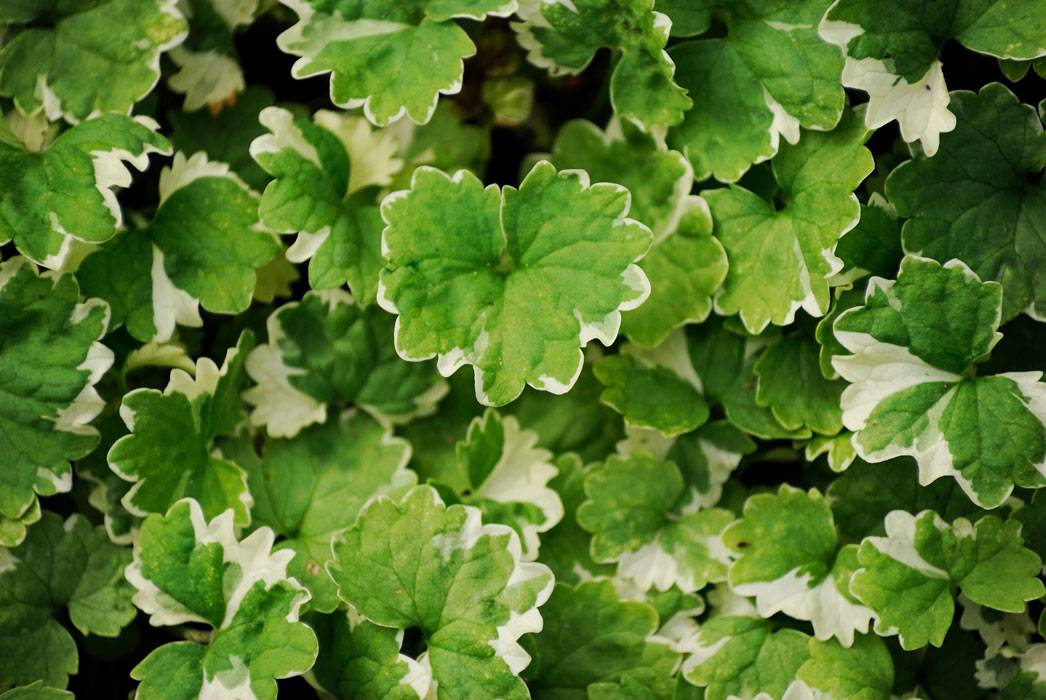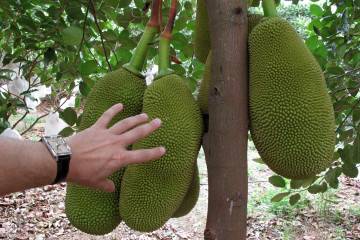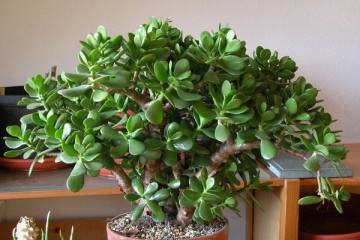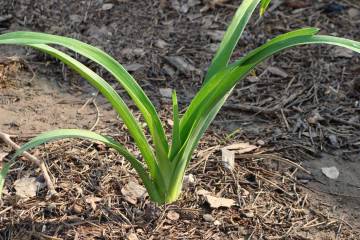Where does ivy budra grow and use in design
Content:
Ivy buddra is a long-stemmed herb that is considered both a common weed that people want to get rid of, and an ornamental or medicinal flower. It has other names as well: wall, podbirukha, dog or catnip, ground ivy, and even witch's grass. The plant has an ambiguous attitude towards it from people in terms of its properties and values.
Ivy budra - ampelous plant
The ivy buddra belongs to the Lamb family (Yasnotkovy). This name came from Ancient Greece, where it meant "field mint". The plant has a creeping root system. The length of the tetrahedral stem with numerous shoots varies from about 20 to 50 cm. The branches on the stem are directed upwards. The leaves are evergreen, heart-shaped with a short edge, like the stem.
This culture is flourishing. Its flowers have a lilac or blue hue, they are small and funnel-shaped. The corolla grows up to 2 cm. Flowering begins in May or early June and continues until the end of July. The fruit, in the form of a four-part nut, ripens in August and reaches 2 mm. Young shoots are replaced with old ones 2 times a year: before flowering and after
Ivy budra is a honey plant. The resulting nectar has a light amber color, pleasant aroma and beneficial properties.
Reproduction occurs by seeds or vegetatively, as well as by cuttings for planting at home. The budra stalk is planted in a pot, pots, flowerpot or basket using garden soil. Such a houseplant is called ampelous budra.
In order to get rid of the plant, mowing or chemical spraying is used.
Healing properties
Ivy budra has healing properties:
- anti-inflammatory;
- expectorant;
- antiseptic;
- choleretic;
- antibacterial;
- antipyretic.
Budra improves the functioning of the gastrointestinal tract, helps with diarrhea, gastritis, liver, kidney and spleen diseases. It removes salts from the body, helps to accelerate metabolism. Broths and infusions of Budra have a beneficial effect on the lungs and throat, treat laryngitis, tuberculosis, bronchitis and many other diseases of the upper respiratory tract. It is used as a lotion and compress on wounds, burns, tumors, and budra juice is used for toothaches and stomatitis.
The stem and leaves have been proven to contain:
- essential oil;
- ascorbic acid;
- aldehydes;
- carotene;
- saponins;
- flavonoids;
- choline;
- methionine;
- resin;
- iron;
- bitterness;
- zinc.
The herb is used only with a doctor's prescription in the prescribed doses. It is necessary to take breaks between courses. You can not use the herb for pregnant and lactating women, as well as children. Due to the content of toxic substances, it is highly discouraged to feed it to pets and livestock.
It is believed that the plant has magical properties. It is even called "witch's grass", which supposedly reveals unusual and energetic abilities in a person.
Ivy plants
This type of grass is a perennial and evergreen vegetation. A branchy creeping stem can reach 50 cm. The leaves are most often round or heart-shaped with denticles along the edges or slightly wrinkled.
Reproduction takes place by seed or cuttings. Many ivy plants tend to bloom. They prefer light, and the air temperature for their favorable growth should reach an average of +20 ° C. They are unassuming to the soil, the main thing is that it is sufficiently moist and not dry.
Description of ivy ampelous budra
There is another type of budra - ivy. It has the same long creeping stems up to 70 cm long and lilac or blue flowers. The difference is observed in the appearance of the leaves. In ivy, they are painted in 2 colors: white and green, which gives it an unusual look. Thus, it is in great demand among gardeners.
In autumn, the leaves turn pink-green, so the plant is decorative all year round. In care, this culture is similar to ivy. It is unpretentious to the soil and does not require frequent watering.
Where ampelnaya budra grows
Budra grows almost all over Russia, where there is no excessive dryness. The plant prefers a temperate climate. The optimum air temperature for development is + 18-20 ° С. It can also be found in Ukraine, Turkey, China, Georgia, Azerbaijan, Kazakhstan and many European countries. She even "migrated" to North America. Budra grows most often with shrubs in deciduous forests, near rivers, in meadows.
The plant is considered by some to be a weed that is not so easy to get rid of. However, it can also be specially propagated to decorate a garden or decorate a room.
After planting, the sprout is covered with a film to create the effect of a greenhouse, and then placed by the window to receive light. Indoor flower in the cold should be kept at home. Top dressing with special preparations will only benefit. Frequent transplanting is not recommended; it is enough to do this in the spring every 2 years. It is also recommended to prune the stems of the plant during this time.
The use of ivy budra in landscape design
The use of budra is diverse. Thanks to its beautiful, long, hanging stems and flowers, many people place this plant on balconies and loggias. Culture can be kept not only in the house, but also to decorate the landscape with it.
Ivy bud in landscape design is used to decorate flower beds, lawns and under trees. Such a “cover” grows quickly, does not allow the earth to dry out and other extra weed grass to grow.
When the stems lie on the soil, the plant multiplies. In order for it not to grow further, it is necessary to cut off the shoots in a timely manner.
Budra loves spraying with water, so do not forget to do this, especially in the heat. Budra grown by the pond also looks very attractive. And she feels much more comfortable next to the pond.
Ivy Budra Variegata
Crimped budra Variegata is a variegated variety of this crop, characterized by leaves with white spots around the edges. It happens that a variegated plant does not bloom at all. It is very fond of light and warmth, so keeping it in the shade is not recommended. Favorable air temperature for growth in summer ranges from +18 to 25 ° С, and in winter - from +10 to 12 ° С.
In autumn and winter, it is enough to water and spray once a week, and more often in spring and summer. It is better to keep an indoor flower in diffused sunlight, and not in direct light.
Ivy and ivy budra are an excellent option for decorating an apartment and a summer residence, especially since it is distinguished by its unpretentious care.Lush leaves, beautiful flowers on tall stems delight the eye. Medicinal properties help to overcome many diseases, because it is not for nothing that the people also call it "the magpie". Therefore, you should not treat it like a weed and rush to get rid of it.
